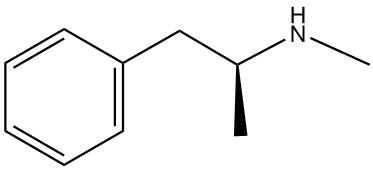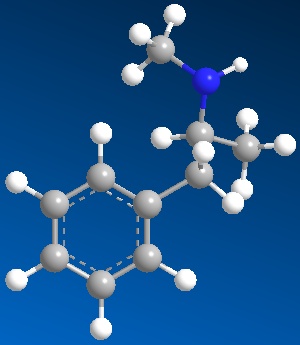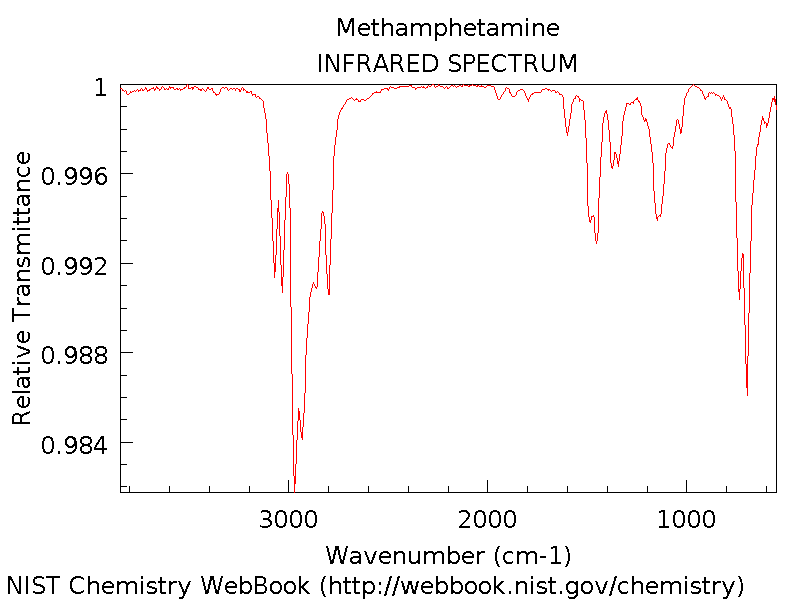It07:Methamphetamine
Overview
Methamphetamine is a compound that possesses highly addictive properties. It's actually a central nervous system stimulant. It is often used by injecting, snorting, smoking, or ingesting orally. Methamphetamine users would feel a short intense "rush" after the drug is initially administered. The immediate effects of taking this drug include increased activity and decreased appetite. Methamphetamine has limited medical uses for the treatment of narcolepsy, attention deficit disorders, and obesity.
History
Methamphetamine was firstly discovered in Japan in 1919. The crystalline powder is soluble in water, making it a perfect drug for injection. It is now still legally produced in the United States, commercially sold under the legal trade name Desoxyn.
During World War II, amphetamines were widely used to keep the soldiers going (during the Vietnam war in World War II, American soldiers had used amphetamines drugs more than the rest of the world did). In Japan, intravenous methamphetamine injection abuse reached epidemic levels immediately after World War II, as supplies stored for military use became readily available to the public.
1950s in the United States, manufactured tablets of both dextroamphetamine (Dexedrine) and methamphetamine (Methedrine) became easily available and were abused by people such as students, truck drivers and athletes. Amphetamines became a cure-all for such things as weight control to treating mild depression.
This pattern changed drastically after 10 years in the 1960s, with the rapid increased availability of injectable methamphetamine. The 1970 Controlled Substances Act severely restricted the legal production of injectable methamphetamine, causing its abuse to decrease greatly.
Stuctures of Methamphetamine


Molecular coordinates
| Methamphetamine | |
|---|---|

| |
| General | |
| Systematic name | n-methyl-1-phenyl-propan-2-amine |
| Other names | ice, speed, meth, crystal, crank |
| Molecular formula | C10H15N |
| Molar mass | 149.233 g/mol |
| CAS number | 537-46-2 |
| Properties | |
| Density & phase | 0.907 ± 0.06 g/cm3 |
| Solubility in water | soluble |
| Melting point | 170-175°C |
Methamphetamine |
Methamphetamine |
Synthesis
Ephedrine Reduction
C6H5-(CHOH)-CH(NHCH3)-CH3 + HI --> C6H5-(CHI)-CH(NHCH3)-CH3 + H2O
C6H5-(CHI)-CH(NHCH3)-CH3 + HI --> C6H5-CH2-CH(NHCH3)-CH3 + I2
Spectra of methamphetamine


How is Methamphetamine used?
There are many forms of methamphetamine, so it can be injected, smoked, snorted and orally ingested.
In the 1980's, "ice" is a smokable, first coming used form of methamphetamine. Ice is a usually clear crystal with high purity that can be smoked in a glass pipe. The smoke is odorless, leaves a residue that can be resmoked. This will produce effects that may continue for 12 hours or more. After immediately smoking the drug or injecting it, the user will experience an intense rush that lasts only for a few minutes and it is described as extremely pleasurable. Snorting or oral ingestion will produce euphoria (a high but not an intense rush). Snorting will produce effects within 3 to 5 minutes while oral ingestion will produce effects within 15 to 20 minutes.
long-term and short-term effects
Long-term effects include: paranoia,dependence and addiction psychosis,hallucinations,repetitive motor activity,mood disturbances,weight loss and stroke.
Short-term effects include:increased activity,increased attention and decreased fatigue,euphoria and rush,hyperthermia,increased respiration and decreased appetite.
References
http://methamphetamine.co.uk/methfaq/index.html
http://www.whitehousedrugpolicy.gov/drugfact/methamphetamine/index.html
